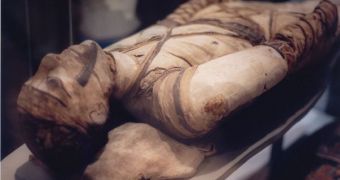The Ancient Egyptian mummy known as Irtyersenu caused quite a stir in England in 1825, when Dr. Augustus Bozzi Granville, the expert who performed the first autopsy on the remains, concluded that the woman had died of ovarian cancer. The finds were presented to the Royal Society of London, and caused quite a bit of excitement, as 19th-century interest in Egyptian mummies was at its peak. New studies seem, however, to point at the fact that the woman actually died of tuberculosis, disproving previous claims, the BBC News reports.
According to the new investigation, which appears in the latest issue of the Royal Society journal Biological Sciences, it may be that Irtyersenu fell prey to the widespread tuberculosis (TB) epidemic that would sweep across Egypt on a regular basis. In charge of the latest research were experts from the University College London (UCL) led by Dr. Helen Donoghue. She believes that Granville failed to notice the inflammation of the lungs that was a clear indicator of tuberculosis.
Rather, the expert focused on a tumor he had discovered on the mummy's ovaries, which led him to conclude that cancer had been the most likely cause of death. Following the autopsy methods of the time, only limited tissue samples remained for the UCL team. However, upon analysis, modern-day scientists found traces of Mycobacterium tuberculosis in the lungs, gall bladder and bone samples. This means that the infection was very widespread, and that it most likely led to her death.
Speaking about Granville's work, Donoghue says that her colleague did the best he could with the available medical knowledge and equipment. Even now, extracting the DNA information from the tissues has proven to be extremely difficult to do. “He was remarkably careful and thorough. It was the first time anybody had tried to do a medical autopsy on an Egyptian mummy. Before that it was all about their entertainment value – it was a bit like a circus – and most of the interest was in the jewelery that was wrapped up in the bandages,” she adds.
The exact methods used by the ancient Egyptians to preserve the human body for thousands of years have still remained a mystery to this day, despite numerous attempts at deciphering the secret.

 14 DAY TRIAL //
14 DAY TRIAL //